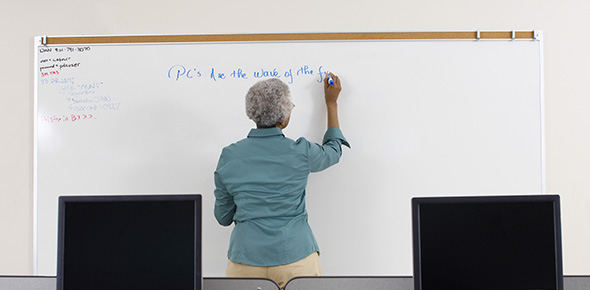Related Flashcards
Cards In This Set
| Front | Back |
|
Team
|
Consists of 2 or more people who work interdependently over some time period to accomplish common goals related to some task-oriented purpose
Subset of "group" |
|
Work team
|
Type of team that produces goods/provides services, require a full time commitment. Relatively permanent,
Long life span, high member involvement Decision making confined to specific job duty Operational level production and service tasks Example: production team, maintenance team, sales team |
|
Management Team
|
Type of team that is responsible for coordinating the activities of organizational subunits, typically departments or functional areas - to help the organization achieve its long term goals
Example: Top management |
|
Parallel Team
|
Type of team composed of members from various jobs who provide recommendations to managers and resolve issues
Require only part-time commitment, life span varies Examples: Quality circle, advisory council, committee |
|
Project team
|
Type of team formed to take on one-time tasks that are generally complex and require a lot of input from members with diferent types of training and expertise
Commitment varies Example: product design team, research group, planning team |
|
Action team
|
Type of team that performs complex tasks that vary in duration and take place in highly visible or challenging circumstances.
Life span and member involvement vary Example: Musical group, surgical team, expedition team, sports team. |
|
Task Interdependence (4 Types)
|
Pooled interdependence
Sequential interdependence Reciprocal interdependence Comprehensive interdependence |
|
Task interdependence
|
Refers to the degree to which team members interact with and rely on other team members for the information, materials, and resources needed to accomplish work for the team.
|
|
Pooled interdependence
|
Requires the lowest degree of required coordination
Group members complete work assignments independently, then work is compiled to represent the group's output. |
|
Sequential interdependence
|
Requires different tasks to be done in prescribed order, ineraction only occurs between memebers who perform tasks that are next to each other in the sequence
Example: assembly line |
|
Reciprocal interdependence
|
Requires members that are specialized to perform specific tasks. members interact with a subset of other members to complete the team's work
|
|
Comprehensive interdependence
|
Requires the highest level of interaction and coordination among members. each member has great deal of discretion in terms of what they do and whom they interact with
|
|
Goal interdependence
|
The degree to which members have a shared vision of the team's goal and align their individual goals with that vision
(mission statements) |
|
Outcome interdependence
|
How members are linked to one another in terms of the feedback and outcomes they receive as a consequence of working in the team.
Examples of reward: bonuses, recognition, time off |
|
Team Roles - Team TASK Roles
|
Roles that directly facilitate the accomplishment of team tasks
- Initiator - Coordinator - Devil's advocate - Energizer - Procedural Technician |







